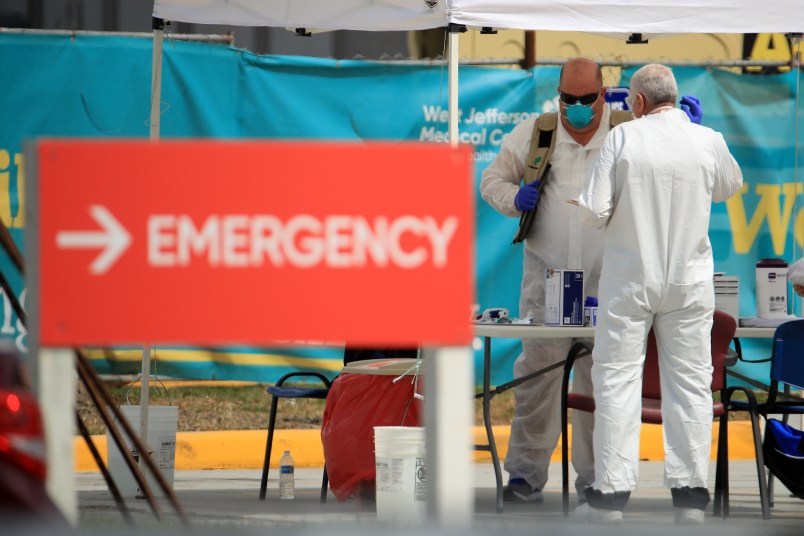The Trump administration is pushing back on reports that top officials moved to exclude more people from COVID-19 testing guidelines.
The administration released new guidance on Monday recommending that asymptomatic people not be tested for COVID-19, even if they had been in recent contact with someone infected with the deadly virus.
That change reportedly came “from the top down,” and was not written by the CDC but was, according to the Times and CNN, imposed on the agency by higher-ups within the administration.
Many experts were baffled. Dr. Tom Frieden, a former CDC director, tweeted that the changes were “probably indefensible.”
Two unexplained, inexplicable, probably indefensible changes, likely imposed on CDC's website.
* Dammit, if you come from a place with lots of Covid, quarantine for 14 days
* If you're a contact, get tested. If +, we can trace your contacts and stop chains of spread.A sad day.
— Dr. Tom Frieden (@DrTomFrieden) August 26, 2020
The move could lower the volume of people being tested, at a time when the virus remains widespread, albeit in decline, experts said. The decision also comes as President Trump is embarking on a re-election campaign based on the idea that the country has recovered from COVID-19, an argument only spurred by lower case counts.
But Health and Human Services Assistant Secretary for Health Adm. Brett Giroir dismissed any suggestion that top Trump officials imposed the change on the CDC.
“There is no direction from President Trump, the Vice President, or Secretary Azar about what we need to do when, this is an evidence-based decision driven by the scientists in the division,” Giroir said. “I can speak of that directly and openly, because I was there, I circulated the manuscript, to make sure there was absolute consensus.”
“Everyone signed off on it before it got to a place where the political leadership would have even seen it,” Giroir added.
Giroir also pushed back on the suggestion that the move would lower testing volume in a Wednesday call with reporters.
“There’s nothing in here that is meant to intentionally decrease the number of tests,” Giroir said of the new guidance. “Conceptually, we don’t believe the number of tests should go down. Conceptually, we believe the number of tests will go up.”
The concern, echoed by Frieden and others, is partly that fewer Americans will be tested, but also that COVID-19 will become harder to track as those who may be exposed are discouraged from finding out if they have the virus.
Giroir argued on the call that too much testing could breed overconfidence, saying that “a negative test on day two [after exposure] doesn’t mean you’re negative.”
“What is the value of that? It doesn’t mean on Day four you can go out and visit grandma or on Day six go without a mask,” he added.
The CDC change comes after the organization had said for months that people who had been exposed to those infected with COVID-19 should be tested, even if they themselves were asymptomatic. In the past, officials have attributed the spread of COVID-19 to the fact that it can be passed along by people who are asymptomatic.
But Giroir argued on the call that testing was at the discretion of local officials, and framed the policy shift as a way of placing the responsibilities further on the shoulders of localities.
“The goal is to make this more perspective, data-driven, strategic and intelligent by putting more power and authority in the hands of the public health officials,” Giroir said, adding that he wasn’t sure if people who criticized the new guidelines “had actually read them.”






